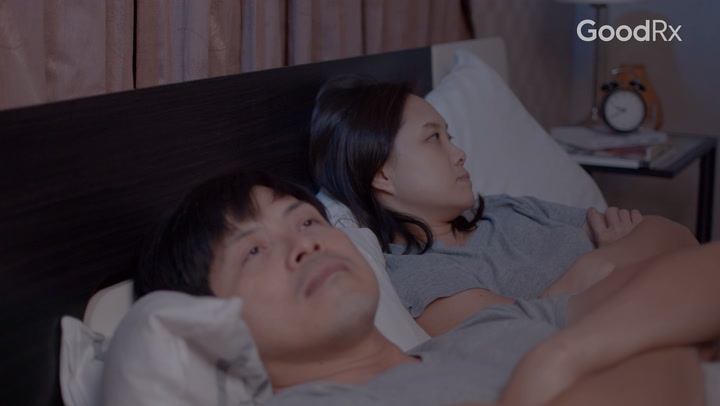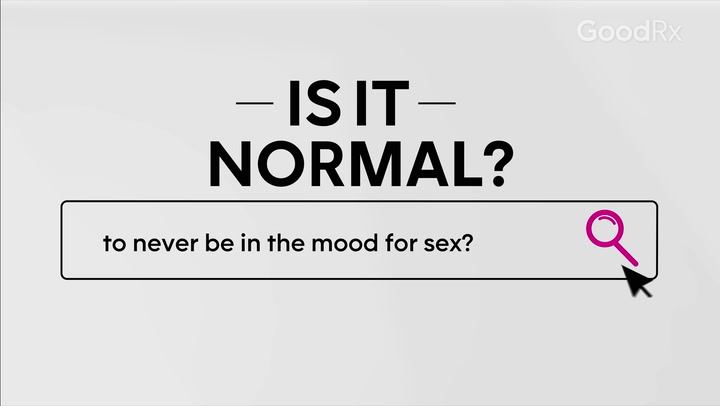
Where Did That Sex Drive Go? A Guide to Low Libido in Women
Key takeaways:
It’s normal for libido (sex drive) to go up and down over time. Libido is affected by many different things, like hormones, life experiences, and medications.
Mental and physical health conditions can change your sex drive too.
Some people naturally have a low sex drive. But if it bothers you, treatment can help.
Treatment for low libido includes medications, therapy, and lifestyle changes.

Your libido — also known as your “sex drive” — is your overall interest in sex. It varies from person to person and throughout life. It includes your desire to have sex, your sexual thoughts and fantasies, and what sex means to you personally.
It’s normal for libido to change over time. After all, sex drive is affected by many different things — like life events, hormones, your mental and physical health, and the medications you take. And it’s no secret that relationships and past experiences play a role too.
What are the symptoms of low libido?
A low libido means that you’re less interested in sex — or maybe not interested at all.
For Every Era of You
Expert solutions made for women, by women. OLLY's here to support you through every age, stage & magnificent mood change.*


*These statements have not been evaluated by the Food and Drug Administration. This product is not intended to diagnose, treat, cure, or prevent any disease
Here are some things you might notice if your sex drive is low:
You have little to no interest in any type of sexual activity, including masturbation.
You don’t have very many sexual thoughts or erotic fantasies.
You have difficulty initiating sex.
You don’t get a lot of pleasure out of having sex.
Not being interested in sex (asexuality) can be totally normal. But, for many people, sexual intimacy is an enjoyable part of life. And it can be startling and upsetting to have your sex drive dip or completely disappear.
Is libido the same as sexual arousal?
No. Libido and sexual arousal are connected, but they’re different:
Sexual arousal is what happens physically to your body when it’s stimulated sexually. It’s what people call “feeling turned on.” During sexual arousal, physical changes take place in your body. Your genitals start to swell, get lubricated, and become more sensitive to touch and stimulation. Sometimes, this can lead to orgasm.
Libido is your desire to have sex, either with yourself or a partner. Libido also includes your thoughts and fantasies about sex.
When you’re interested in sex (libido), and able to also get physically turned on (arousal), that’s often a good recipe for pleasurable sex. But it’s possible to feel sexually aroused and not desire sex. Likewise, you can want sex but not be able to become physically aroused.
How common is low libido in women?
Low libido in women is very common. Studies have shown that about 1 in 3 women in the U.S. experience a low sex drive at some point in their lives.
Low libido is especially common during perimenopause and menopause. But hormonal changes at other times of life can also cause a low sex drive, as can medications, relationship conflicts, work-related stress, and more.
Common causes of low libido in women
Low libido in women can be caused by many different factors. Some of these are related to health issues and your body, including:
Medical problems
Hormonal birth control
Pregnancy
Can working out increase your sex drive? Read about six surprising benefits of exercise for your libido.
Why can’t I orgasm? What every woman should know about orgasms.
Does it matter if we’ve stopped having sex? Here’s what it means if you’re not having sex in your relationship.
Other factors are linked to your mental health and relationships:
Mental health conditions
Psychological and emotional factors
Past sexual experiences
Stress
Relationship issues
All of these can impact how you feel about sex — mentally, physically, and emotionally. And your libido can be affected by more than one thing too.
Problems with sex can also become a vicious cycle. For example, if you’re experiencing pain during intercourse, it can make you less interested in having sex. And being less interested in sex can lead to stress or relationship issues — which might decrease your libido even more.
When to talk to a healthcare professional
There’s no “right or wrong” when it comes to your sex drive. After all, it’s totally normal for your sex drive to fluctuate over time.
But if you’re feeling down or discouraged about your libido, it could be worth talking to your primary care provider or OB-GYN. They can help figure out what’s going on with your libido and talk to you about treatment options.
What is female sexual interest/arousal disorder?
As we mentioned above, having a low libido isn’t necessarily a problem. It’s something that many women will experience at some point in life.
But for some people, low libido can actually be a sexual health condition called female sexual interest/arousal disorder (FSIAD) — previously known as hypoactive sexual desire disorder, or HSDD. People with FSIAD have a very low libido and/or problems getting sexually aroused. To be diagnosed with FSIAD, you must have symptoms for at least 6 months. Your symptoms also have to make you feel unhappy or distressed.
Treating low libido in women
If you’re not satisfied with your sex life, there are many things you can do to make a change. Some of these you can do on your own. However, it's always a good idea to check in with a healthcare professional first.
Some treatments for low libido are discussed below.
Address the underlying cause
Looking for an underlying cause is a good place to start — especially if you can do something about it. For example, if you take a medication that’s affecting your sex life, you might be able to change the medication or lower your dose. Or, if your low libido is caused by depression, anxiety, or stress, addressing your mental health may be able to solve your sexual troubles too.
Therapy
Therapy can help with low libido. Options include individual therapy, couples therapy, and sex therapy. Therapy is also a great way to explore your mental health and your relationships, both of which play a role in your sex life.
Lifestyle and relationship changes
Taking care of yourself — both mind and body — can help give your libido a boost. There’s evidence that eating nutritious foods, exercising, and reducing stress can all contribute to women’s sexual health.
Rethinking intimacy with your partner can help too. This may include new ways of spending time together, reading about sex, or watching videos that put you in the mood. You may also want to visit a “sex store” together to explore and test out products that could help increase your interest and enjoyment in sex.
Medications
In some cases, taking prescription medication can help with libido. But medications aren’t right for everyone. They’re typically only recommended if you can say “yes” to all three of these points:
You have a diagnosis of a sexual disorder, meaning you’ve had symptoms for at least 6 months and your symptoms make you unhappy or distressed.
You haven’t improved with non-medication treatments.
Your symptoms aren’t better explained by another physical or mental health condition or due to a medication or substance you’re taking.
It’s always best to speak with your healthcare team to find out if medications are right for you. They can discuss the range of medication options that are available and help you weigh the risks. Here are some of your options:
Hormone therapy: This might include testosterone, estrogen, and estrogen-like medications. Though these treatments aren’t FDA approved for low libido in women, they can be helpful in some cases.
Flibanserin (Addyi): Addyi is an FDA-approved medication for low libido in premenopausal women. It’s a nonhormonal treatment that affects serotonin, dopamine, and norepinephrine in your brain. But there’s not a lot of evidence that Addyi really helps much with libido. And many people have major side effects with this medication — like low blood pressure, dizziness, and fainting.
Bupropion (Wellbutrin): Bupropion is a good first-choice medication for treating low libido — even though it’s an off-label use. Just like Addyi, bupropion affects serotonin, dopamine, and norepinephrine. But bupropion has been around a lot longer (since 1985), which means researchers know much more about its side effects and long-term safety.
Bremelanotide (Vyleesi): Vyleesi is another FDA-approved medication for low libido in premenopausal women. It works on melanocortin receptors in your brain, though experts don’t know exactly how this is connected to sex drive. The two key differences are that Vyleesi is an injection, and you only take it as needed before having sex. There hasn’t been as much research done on Vyleesi compared with older medications like testosterone and bupropion. But it did work better than placebo in clinical trials.
Natural supplements
Certain natural supplements may potentially help with libido, especially for women going through menopause.
Frequently asked questions
Asexuality means you’re not sexually attracted to other people, or only in certain circumstances. It’s a type of sexual orientation, just like homosexuality or heterosexuality.
Probably not. When it comes to your sex life, your best bet is to eat a wide variety of nutritious foods.
There’s a small amount of evidence that certain foods — like oysters, watermelon, garlic, and nuts — could potentially be helpful for some people. But more research is needed before we can say for sure.
Yes and no. While a drink or two can lower inhibitions and put you “in the mood,” alcohol actually makes it harder for your body to respond sexually.
Alcohol also comes with significant health risks. Even small amounts (less than 1 drink a day) can increase your risk of having cancer.
The bottom line
A “normal” libido (sex drive) is different for everyone. And it may naturally change many times over the course of your life. But if your low libido is making you feel down about your sex life, it could be helpful to talk with your primary care provider. You may be able to make changes in your personal life or to the medications you take. Other treatments are also available and may help you.
Why trust our experts?


References
Finley, N. (2017). Lifestyle choices can augment female sexual well-being. American Journal of Lifestyle Medicine.
Guevara, M., et al. (2025). The U.S. surgeon general wants cancer warnings on alcohol. Here's why. National Public Radio.
Jaspers, L., et al. (2016). Efficacy and safety of flibanserin for the treatment of hypoactive sexual desire disorder in women: A systematic review and meta-analysis. JAMA Internal Medicine.
Maclaren, K., et al. (2011). Managing low sexual desire in women. Women’s Health.
Munarriz, R., et al. (n.d.). Biology of female sexual function. Boston University School of Medicine, Sexual Medicine.
National Health Service. (2022). Loss of libido (reduced sex drive).
Pearson, C., et al. (2023). Alcohol might be ruining your orgasm. The New York Times.
Sexual Medicine Society of North America. (2023). Defining and diagnosing female sexual interest/arousal disorder.
Shaughnessy, A. F. (2016). Flibanserin ineffective for hypoactive sexual desire disorder in women. American Family Physician.
Simon, J. A., et al. (2019). Long-term safety and efficacy of bremelanotide for hypoactive sexual desire disorder. Obstetrics & Gynecology.
Shifren, J. L., et al. (2008). Sexual problems and distress in United States women: Prevalence and correlates. Obstetrics and Gynecology.
West, S. L., et al. (2008). Prevalence of low sexual desire and hypoactive sexual desire disorder in a nationally representative sample of US women. Archives of Internal Medicine.














